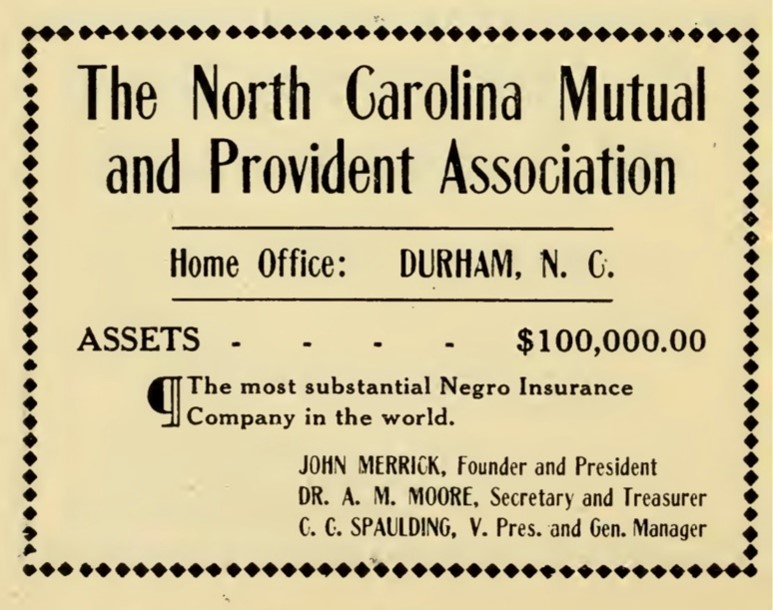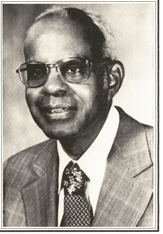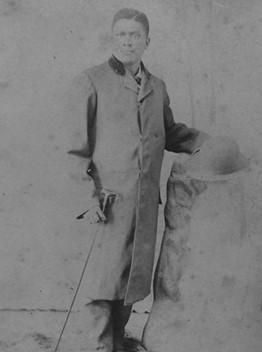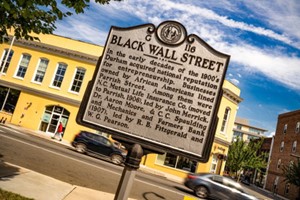Welcome Back to Durham!
School is back in session and we at the John Hope Franklin Research Center would like to welcome back all the students! For September, we want to focus on the place that so many students, academics, and residents call home, Durham, North Carolina.
You cannot talk about the history of black business without mentioning the legacy of Black Wall Streets. The collective effort of African Americans through business ownership and the growth of communities through increased financial means was a product of Jim Crow and segregation throughout the South. After the Civil War, while still barred from opportunities of their white counterparts, African Americans took advantage of their new status as citizens by taking matters into their own hands and creating the American dream for themselves.
In the late 19th, early 20th century places like the Greenwood District in Tulsa, Oklahoma, the Auburn Historic district in Atlanta, Georgia, Farish Street in Jackson Mississippi, and West Ninth Street in Little Rock, Arkansas were filled with insurance agencies, banks, barber shops and other black owned businesses. More importantly they served as cultural hubs that fostered community collectiveness through churches, clubs and organizations, and schools.
And because we are located in the beautiful and historic city of Durham, it is only right to discuss the history of Black Wall Street that prospered in the Hayti District, once located between Pettigrew and Fayetteville Streets. This area was filled with black business and neighborhoods that were the homes of many prominent African Americans figures. Some of the people found within the Behind the Veil Collection were a part of this historic time, and speak in detail about their lives and the lives of others around them. This week, we learn about these people.
“When Harlem in New York City became the Mecca of the “New Negro” and the center of the Negro Renaissance, the capital of the black bourgeoisie was Durham, North Carolina,” Black Bourgeoisie by E. Franklin Frazier
After W.E.B. DuBois visited Durham in 1912 he wrote “Three men began the economic building of black Durham: a minister with college training, a physician with professional training, and a barber who saved his money.”( The Legacy of Durham’s Black Wall Street | Discover Durham) The three men that DuBois was referencing was Aaron M. Moore, John H. Merrick, and Charles C. Spaulding. Also known as “Triumvirate,” together they grew the first black business that would create the bridge for the creation of other businesses: the North Carolina Mutual Life Insurance Company. Started in 1898 (and moving to Parish Street in 1904) NC Mutual, as it is commonly known, would provide investment opportunities, small business loans, and life insurance. It was the first black owned insurance company in the state and the largest in the country, servicing African Americans in not only North Carolina, but later states throughout the south.

We learn this by listening to the oral history of William (Bill) Alexander Clement [William Clement interview recording, 1993 May 28 / Behind the Veil / Duke Digital Repository]. While Clement was born in South Carolina, his father, Arthur was a North Carolina native. And after Arthur graduated from Johnson C. Smith in 1905, he began working for NC Mutual, establishing an office in Charleston. While in college, Bill knew that he wanted to go into business, and as soon as he graduated, he began working at NC Mutual. He was invited by the agency director to come to Durham and after training for six weeks, he was sent to Memphis to start working for $12.50 a week.
Part 1 31:02 “Things were pretty rough. But $12.50 a week was more than what the teachers were getting. The teachers in South Carolina and Tennessee and mostly Georgia were earning about $37.50 a month. $37.50 a month. And to ger $12.50 a week, that was the equivalent of almost $50 a month.”
NC Mutual was the only job that Clement held in his entire life. Working in South Carolina, Georgia, Alabama, and Tennessee, Clement would get to know CC Spaulding, Ed Merrick (the son of John Merrick) and Mr. John Hervey Wheeler. He would serve as the region supervisor, assisting director and agency director before named executive vice president in 1975 and retiring in 1978.

Ernestine Bynum [Ernestine Bynum interview recording, 1993 May 27 / Behind the Veil / Duke Digital Repository] was born and raised in Durham. Bynum was the granddaughter of a business owner. The Hargrett Funeral Service [Who We Are | Hargett Funeral Service, Inc. of Greensboro (hargettfuneralserviceinc.com)] was created by Joseph C. Hargett in Kinston, NC in 1871. He was one of the first black businessmen in the area. Her father would follow in his father-in laws footsteps creating one of the oldest funeral homes still servicing in Durham today, the Scarborough and Hargett Funeral Home [History & Staff | Scarborough & Hargett Celebration of Life Center, Inc – Durham, NC (scarboroughhargettcelebration.com)].

Bynum’s interview is filled with Durham’s black business history as she details businesses and their locations. And because of where she lived and her parent’s involvement within the community, she grew up knowing some of the most influential leaders of Black Wall Street like “Triumvirate”, because “Most of them lived right up Fayetteville Street.”
Part 1 11:36 “As I said, the library was on the corner of Pedigree Street and Fayetteville Street across from it was Mr. John Merrick’s house. Then you had another house next to that, then was the street where White Rock Baptist Church set on the corner. That was on the right-hand side of the street coming down on the other side of the street. Dr. Moore’s home. And then you had businesses, drug store, Pearson’s Drug Store. Ed Green’s grocery store…Then there was cafeteria. Then on the corner was St. Joseph’s Church and next to St. Joseph’s church was the parsonage. Next to that was WG Pearson…FK Watkins, who was your first Black movie house. And coming down on this side of the street from up there, [indistinct 00:15:52] library. Then there were homes until you got those section you called—That’s what’s what you call Haiti. When they talk about Hayti. And that in there was where you had a theater on this side the street, the Southern Fidelity started on that side the street and coming.”
Along with the history of Durham’s Black Wall Street, listeners also learn about Bynum’s strong opinions about working at the funeral home. She states multiple times that she did not want to have a career in funeral services, regardless of her family legacy. But her loyalty to her father was stronger and she became the first Black women embalmer in the state and the first women president for the Funeral Directors & Morticians Association of North Carolina. She would also end up working at North Carolina Mutual and then at the Merrick Moore School and Lincoln Hospital.

These two oral histories are just a tip of the iceberg. Within the collection you can also learn about Nathaniel White [Nathaniel White interview recording, 1995 February 17 / Behind the Veil / Duke Digital Repository}, printing service owner whose business also sat on Parrish Street, Alexander Rivera [Alexander Rivera interview recording, 1995 June 02 / Behind the Veil / Duke Digital Repository ] a journalist approached by Dr. James E. Shepard to start and organize a news bureau at North Carolina College (later North Carolina Central) because his father was his dentist, and many others. With fifty oral histories categorized under the Durham location tag and over one hundred within North Carolina, who knows the stories that one may find that mention Durham’s Black Wall Street!
We hope you’ve enjoyed “Digging Through the Tapes: Welcome Back to Durham” and that you continue to take the time to learn more about the history and legacy of the city you can call home!



Another captivating installment in the ‘Behind the Veil’ collection! The deep dive into these tapes reveals hidden gems and fresh perspectives that make each article a must-read.